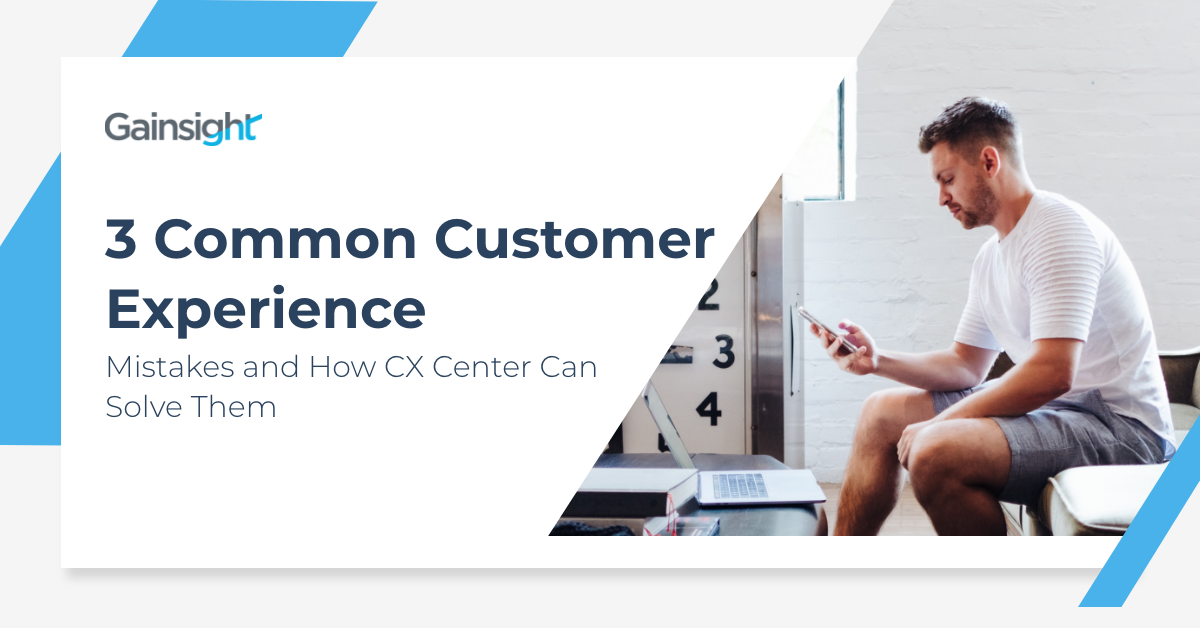As the world around us continues to change, it’s more important than ever that we’re listening to our customers.
Collecting customer feedback is a no-brainer—in fact, 95% of businesses today collect customer sentiment in one way or another. However, only 10% of those businesses actually act on the feedback they collect. That neglect leads to dissatisfied customers and, ultimately, churn.
In a time where we can’t afford to lose customers, we need to be diligent, leaving no feedback behind. Companies that succeed will do so by nurturing lifelong customers through an efficient and collaborative customer experience strategy.
Introducing: CX Center for B2B Customer Feedback
First things first, what do we mean when we say “customer experience strategy?” If you’ve read our Essential Guide to Voice of the Customer, this framework will look familiar:
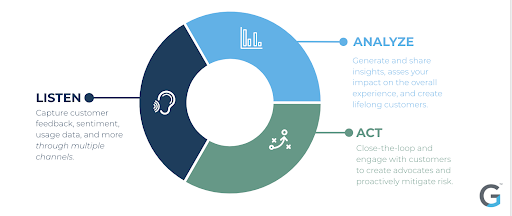
- Listen: You’re listening to customers through direct feedback and broader usage signals from surveys, product usage data, and other channels.
- Act: You’re closing the loop by engaging with customers and proactively mitigating risk or creating advocates.
- Analyze: You’re distilling insights, assessing your impact on the overall experience, and creating loyal customers for life.
CX Center is the convergence point for all of these customer experience activities. It brings together multiple customer sentiment channels, allowing you to close the loop more effectively and get deeper insights. With all this data in one place, you can solve gaps in your customer experience and assess the impact of your actions.
B2B companies need more than a single-point survey solution to measure how their customer base is doing accurately. CX Center is built for B2B use cases, helping businesses overcome the challenges of navigating complicated business relationships and gathering sentiment from all the different stakeholders involved in the customer journey. The following are three more ways CX Center will improve your customer experience strategy.
Problem #1: Your Customer Experience Data is Siloed
How many people in your company are gathering customer feedback? Your support team is sending out NPS surveys after resolving issues. Your product team is doing in-app surveys to see how users are liking a new enhancement. Your CSMs are also talking to customers every day over Zoom or email. Customer experience data (feedback, sentiment, and other behavioral indicators) is everywhere.
When your data is spread out and siloed away, its value is not being fully realized. It’s also more difficult to share data that’s spread across multiple sources. Your teams are not getting a holistic view of the customer experience, just pieces of the puzzle.
How CX Center Solves This:
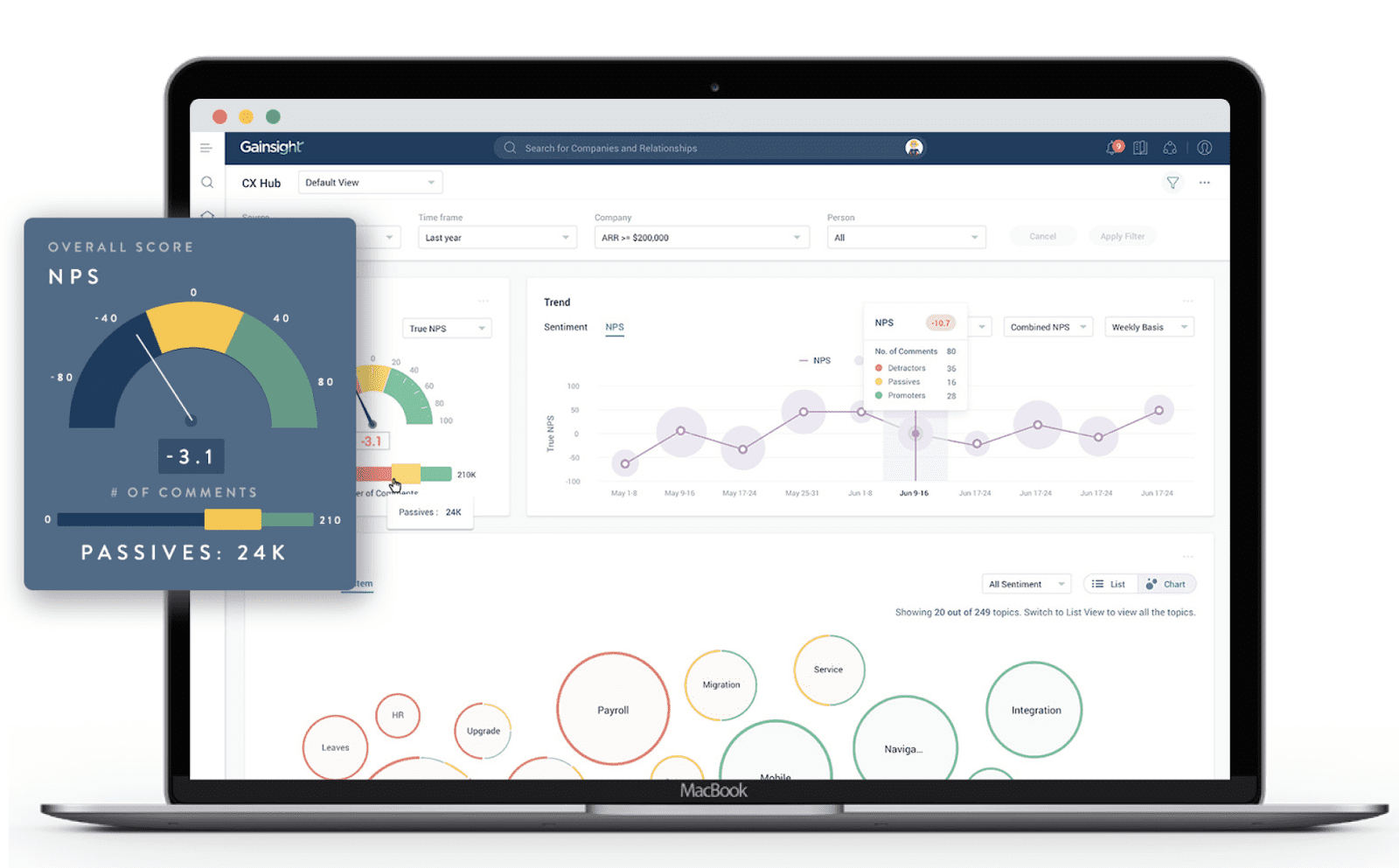
CX Center provides a holistic view of customer experience, aggregating data from your surveys done in Gainsight CS, Gainsight PX, and other external survey tools. It also brings in sentiment from your Gainsight Timeline entries to provide a better picture of where your customer experience needs improvement.
Customer-facing roles like Customer Success need all the customer data they can get to manage their book of business effectively. On the flip side, Product can use this same data to influence their roadmap decisions. CX Center brings all your siloed data together and makes it more accessible to your teams. Shared views allow each team to customize what information they see to cut through the noise and get to what is most important. The result is a more connected customer experience and richer insights to influence how you build your product and interact with customers.
Problem #2: You’re Ignoring Open-Ended Feedback
Take a moment to think about all the surveys you’re sending with that “Additional Comments” section. What’s happening to all that open-ended feedback? Text feedback can be super valuable, but only if you’re analyzing the responses in the right way. Building a word cloud from scratch is time-consuming, and in the end, it doesn’t provide much context into why certain topics stand out.
How CX Center Solves This:
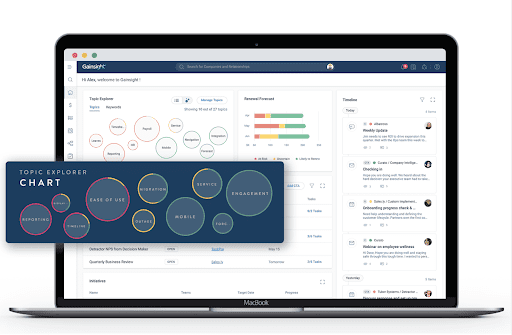
CX Center’s Topic Explorer uses Natural Language Processing (powered by IBM Watson and Gainsight’s Rules Engine) to uncover topics and themes from text feedback. Topic Explorer brings in sentiment from survey responses and Timeline entries, so important moments in CSM emails or notes won’t be overlooked.
With that data at your disposal, you can set keywords or choose from a list of common keywords associated with the topic of your choice. Then, Topic Explorer does the work for you. It associates positive, neutral, or negative sentiment to your Topics as more keywords are absorbed. You can also click into the topics to read the related text responses and get more context. This can direct where to focus efforts on improvements in processes or on your product roadmap.
Problem #3: You’re Not Connecting CX to Customer Success Initiatives
If your customer experience strategy isn’t connected to customer success, you’re doing it all wrong. We use this equation to represent the relationship between customer success, customer experience, and customer outcomes:
CS = CX + CO
Customer success is a combination of customer experience and customer outcomes. Your customer experience activities should not live in a vacuum. In order for your CX efforts to truly be effective, they need to be mapped to specific customer outcomes and drive value across your company.
Suppose you’re using a single-point survey solution or a CX tool that isn’t optimized for B2B use cases. In that case, you’re missing out on the opportunity to effectively close the loop and use these insights to fight churn and increase expansion.
How CX Center Solves This:
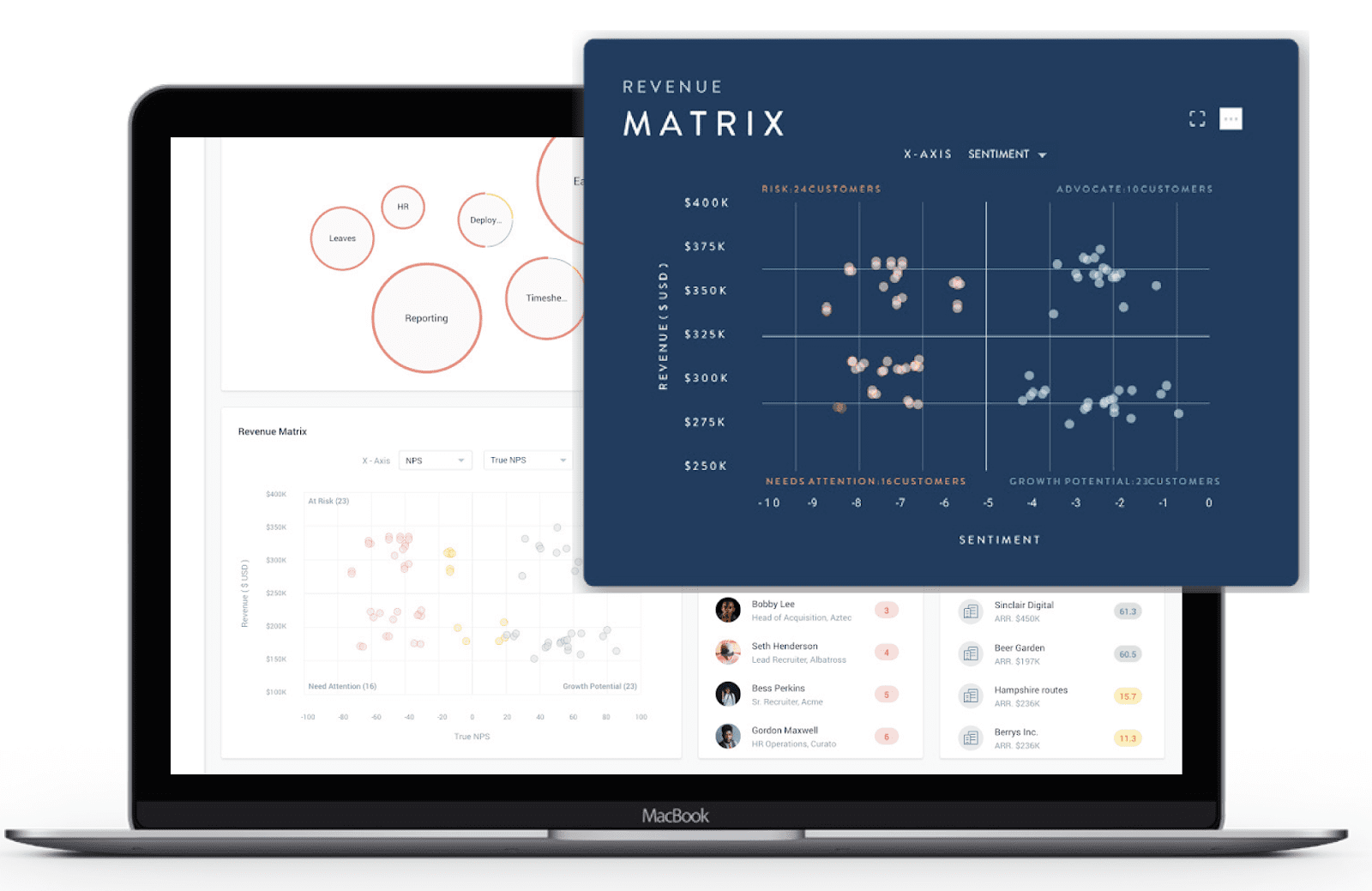
The Revenue Matrix in CX Center can be used to find whitespace for expansion, advocate opportunities, and risks. It plots accounts based on ARR and Sentiment or NPS. It provides a way to visually identify customers that are:
- Good advocates (high ARR, high Sentiment/NPS)
- Growth potential (low ARR, high Sentiment/NPS)
- In need of attention (low ARR, low Sentiment/NPS)
- At-risk (high ARR, low Sentiment/NPS)
With the Revenue Matrix, roles focused on expansion can easily see where to focus their efforts and which customers are prime for upselling and cross-selling. Meanwhile, CSMs can also prioritize their efforts based on ARR, allowing them to proactively work with at-risk companies with high ARR so they become healthy.
CX Center also gives you the ability to extend the value of your CX insights into the entire Gainsight Customer Cloud. This allows you to drive follow-up actions through multiple channels and provides more ways to tie your efforts to revenue.
See CX Center in Action
Learn more about CX Center today in a personalized demo.
You’ll see CX Center in action and how it can help you solve for:
- A disconnected customer experience by providing a central location for all of your data, making it more accessible for every customer-facing team to use.
- Poor adoption by providing deeper insights into customer data—especially the commonly overlooked indicators of sentiment buried in text feedback. Surfacing these hot topics will give your team direction, whether that means improving the product or your customer-facing teams’ processes.
- Excessive churn by giving you the means to identify at-risk customers and getting ahead of the problem. By providing both revenue and sentiment together in a single analysis, your teams can prioritize their activities to ensure the highest-paying accounts stay in the green.
